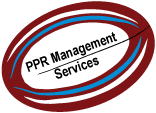 I attended the Board of Directors meeting of APICS – The Association for Operations Management, a non-profit international professional/membership organization last weekend as a member of the Audit Committee. Then, just a couple of days ago, I was speaking with someone about an organization that offers training to non-profit board members. This got me thinking.
I attended the Board of Directors meeting of APICS – The Association for Operations Management, a non-profit international professional/membership organization last weekend as a member of the Audit Committee. Then, just a couple of days ago, I was speaking with someone about an organization that offers training to non-profit board members. This got me thinking.I’ve served on the Board of non-profit organizations, including a dance company as well as different professional organizations. I also worked with a small non-profit as a consultant, working on Board development, organizational development, and meeting management. Non-profit service, including on the Board of Directors, is very rewarding, and I encourage everyone to donate their time when they can. But you should know what you’re doing and what you’re getting into.
Serving on the board of a non-profit offers a variety of benefits. The most important, of course, is helping the organization that you’re serving, but there are other benefits. There are the personal benefits of a feeling of accomplishment and of helping others, and there are professional benefits. Professional benefits include the experience and training of serving on a Board of Directors. Even if you’re already at the top level at the organization you’re working for, serving on a board is a different experience. Networking with other Board members is one of most valuable benefits of service.
Boards differ depending on the size, complexity, and maturity of the organization. Many smaller non-profit organizations are completely volunteer run. The Board consists of volunteers, and volunteers perform all the work of the organization. This Board probably looks a lot different than one at a large non-profit with a full, professional, paid staff. The makeup of the Board at the smaller organization is most likely people who are passionate about the organization, have worked as a volunteer, and who want to do more. They often do not have any formal business training, and may have been recruited to the Board simply because they’ve been around for a while. This does not mean that they can’t or won’t be a high quality member of the Board, it just means that they’ll look at things differently and they’ll probably take more time to get comfortable in the position. This Board is usually small; 5 to 10 people.
Larger, more complex, and more mature organizations are more likely to have Boards that are populated with trained business executives and experienced Board members. The Board members may have never been involved with the organization as a volunteer. They have probably served on the board of other non-profit organizations, and likely are very knowledgeable about the role and responsibilities of the Board. The Boards of these organizations may also be structured differently.
Many large non-profit organizations have boards with 30, 40, 50, or even 100 members, but the size may be a little deceptive. A board that size simply cannot operate effectively to get anything accomplished or make decisions. And in actuality, the board is probably comprised of two distinct groups. The larger group serves on the Board in name only. They have little management responsibility. It’s likely that they’re on the board to give weight and credibility to the organization, and they are expected to donate a certain amount of money. They are also well-connected within the business and high net-worth individual communities, and are expected to leverage those connections for fundraising. The real work of the Board in regards to management and oversight is done by a small group of individuals who make up the Executive Committee.
The structure of the Board will also vary depending on the type of organization. Many professional type organizations, such as membership organizations and trade groups, will have a board of 10 to 20 people who are all involved with the work of the board and the decision making. Work will be performed (or can be) very effectively through committees made up of different Board members. There will usually be an Executive Committee with responsibility for specific items, but the majority of decision making is done by the entire Board.
Well that’s a lot about the structure of the Board, but what does the Board actually do and what are they there for. The answer is vitally important to everyone who serves on the Board of a non-profit, but not all Board members really know what their responsibilities are. So here goes. The Board has two main responsibilities; setting the direction for the organization, and oversight of the organization. Within that, the Board has legal and fiduciary responsibilities to the organization. They must act in the best interests of the organization and make decisions that are in the best interests of the organization. They cannot act for personal gain. Fiduciary responsibility means that you are entrusted with the well-being of the organization, and is generally regarded to mean the assets, or money, of the organization. It’s a big responsibility, and not one to be taken lightly.
The Board sets the direction, the long term goals, of the organization. They have the vision of what the organization will look like into the future, and set the motion to get there. They then guide the organization towards the goals and monitor progress. Monitoring progress includes monitoring activities and actions of the paid staff and volunteers who do the day-to-day work of getting the organization to accomplish its mission. The Board ensures that all laws, policies, and rules are followed and that everyone acts both legally and morally. The Board does not meddle in the details.
What’s all this got to do with Operations? Or rugby, for that matter? Operations professionals should serve on non-profit organization’s Board of Directors for several reasons. Besides the personal and professional benefits mentioned above, Operations professionals bring a unique view and skill set to the table. Operations isn’t about flash and glamour, Operations is about getting things done. Operations delivers on promises. This mindset will bring focus, a sense of direction, and the view of working towards defined goals to the Board. This is often lacking, even with an experienced Board. Too often the focus is on fundraising, marketing, and looking good, when the focus should be on accomplishing the mission of the organization, providing the services that the organization was founded to do, and moving the organization forward. Operations professionals always have their eye on the target, and will work towards getting there.
As for rugby, most rugby teams and clubs are organized and registered as non-profits. Some clubs are quite large and have a relatively large Board. Anyone serving on the Board of their rugby club should understand the role of the Board and their responsibilities.








No comments:
Post a Comment